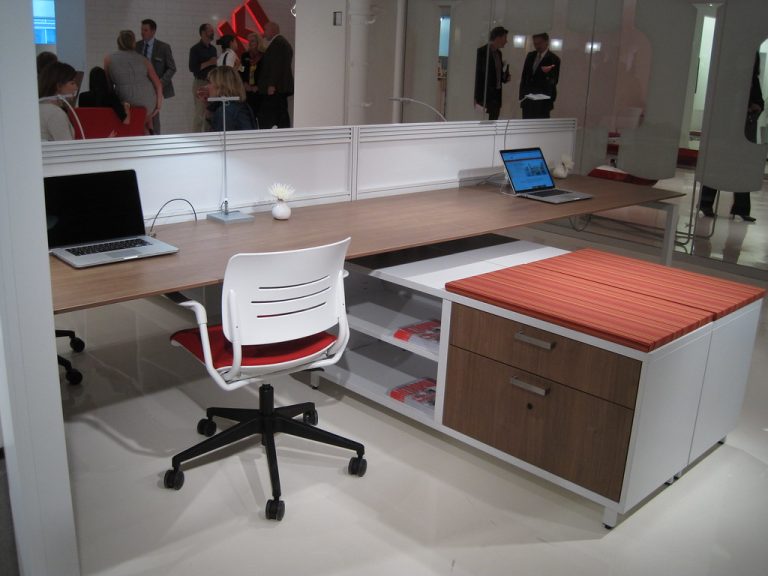When it comes to designing an office, the furniture you choose can make a significant impact on the productivity, comfort, and overall atmosphere of your workspace. Whether you’re setting up a home office or outfitting a corporate environment, selecting the right office furniture is crucial. In this guide, we’ll explore key factors to consider and provide tips to help you make the best choices for your office.
1. Assess Your Needs
Before diving into furniture options, take the time to assess your specific needs. Consider the following questions:
- How many people will be using the office?
- What type of work will be performed?
- Do you need dedicated spaces for meetings, collaboration, or private work?
- Are there any ergonomic requirements to consider?
Understanding your needs will help you determine the types and quantities of furniture required.
2. Prioritize Ergonomics
Ergonomics play a vital role in creating a comfortable and healthy work environment. Investing in ergonomic furniture can reduce the risk of musculoskeletal disorders and improve overall well-being. Key ergonomic features to look for include:
- Adjustable chairs with lumbar support
- Desks with adjustable height options
- Monitor stands to maintain eye level
- Keyboard trays to prevent strain on wrists
3. Choose the Right Desks
Desks are the centerpiece of any office. When selecting desks, consider the following:
- Size and Shape: Ensure the desk fits comfortably in the space without overcrowding. L-shaped and U-shaped desks offer ample workspace and storage.
- Material: Options range from traditional wood to modern glass and metal. Choose a material that complements your office decor and is durable.
- Storage: Look for desks with built-in storage solutions like drawers and shelves to keep the workspace organized.
4. Select Comfortable Chairs
Chairs are where employees spend the majority of their time, making comfort a top priority. Consider these factors:
- Adjustability: Chairs should have adjustable height, backrest, and armrests to accommodate different body types.
- Cushioning: Look for chairs with adequate padding and breathable fabric to ensure comfort during long hours.
- Mobility: Swivel chairs with wheels provide ease of movement and flexibility.
5. Optimize Storage Solutions
Efficient storage is essential for maintaining an organized office. Incorporate a mix of storage options, such as:
- Filing Cabinets: Ideal for storing important documents and keeping them easily accessible.
- Shelving Units: Provide open storage for books, decor, and frequently used items.
- Lockable Cabinets: Offer secure storage for sensitive materials.
6. Foster Collaboration with Meeting Spaces
Create dedicated areas for collaboration and meetings. Consider the following furniture options:
- Conference Tables: Choose tables that accommodate the number of participants and provide ample workspace.
- Collaborative Seating: Sofas, lounge chairs, and modular seating arrangements encourage informal meetings and brainstorming sessions.
- Whiteboards and Presentation Tools: Facilitate idea sharing and presentations with whiteboards, corkboards, or digital displays.
7. Reflect Your Brand and Culture
Office furniture should reflect your company’s brand and culture. Select furniture that aligns with your business’s aesthetic and values. For example:
- Modern and Minimalist: Sleek lines and neutral colors convey professionalism and innovation.
- Creative and Vibrant: Bold colors and unique designs inspire creativity and energy.
8. Plan for Future Growth
Anticipate future needs by selecting flexible and scalable furniture options. Modular furniture allows you to reconfigure the layout as your team grows or your needs change. Investing in quality furniture now can save you money in the long run.
9. Set a Budget
Establish a budget for your office furniture and stick to it. While it’s important to invest in quality pieces, there are cost-effective options available. Consider purchasing from reputable suppliers, exploring second-hand options, or taking advantage of sales and discounts.
10. Test Before You Buy
Whenever possible, test furniture before making a purchase. Sit in chairs, inspect desks, and check the functionality of storage solutions. This hands-on approach ensures that the furniture meets your comfort and quality standards.
Conclusion
Choosing the right office furniture is a critical step in creating a productive and comfortable workspace. By assessing your needs, prioritizing ergonomics, and selecting furniture that reflects your brand, you can design an office that enhances efficiency and well-being. Remember to plan for future growth and stick to your budget to make the best choices for your office.
